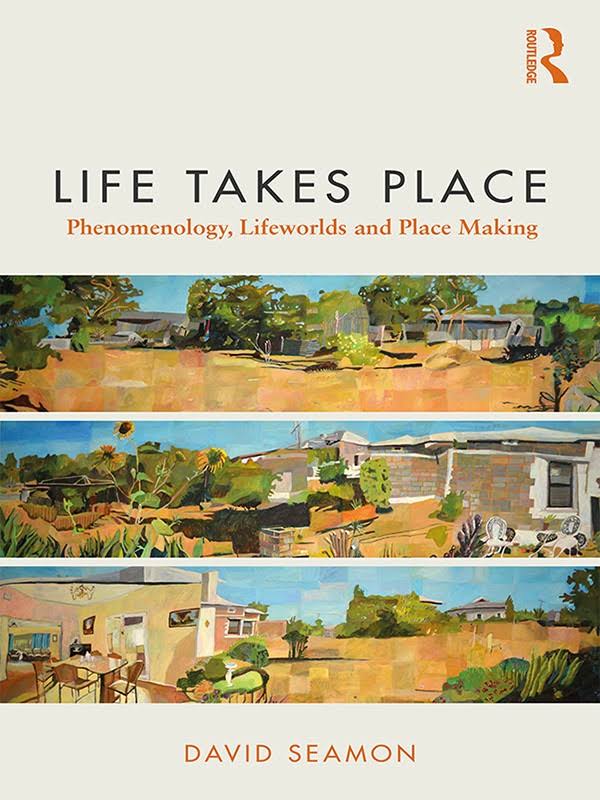– Robert Mugerauer, Professor and Dean Emeritus, College of Built Environments, University of Washington
– Ingrid Leman Stefanovic, Dean, Faculty of Environment, Simon Fraser University
Translated from…

This book is a Korean translation of the book titled Life Takes Place: Phenomenology, Lifeworlds and Place Making by David Seamon(Taylor & Francis, 2018)
A place that is the foundation of life, the phenomenology of place
Why does life take place? This is the fundamental question laying at the heart of this book. The notion that our lives always ‘take place’ and the field of the occurrence is the ‘place’ is referred to as the phenomenology of place. Based on the phenomenological claim that the human being is always human-being-in-place, the author David Seamon points out that the phenomenology of place has become even more important in the era of high mobility. Despite our age of geographic mobility, digital technology, and global interconnections, real-world places and place experiences are indispensable to human life and well-being. Thus, Seamon engages with the latest works on the phenomenology of place by proposed by environmental thinkers such as Edward Casey, Jeff Malpas and Edward Relph. In doing so, he explores how place and the feeling of place itself are integral parts of the human experience, and as Casey claims, are always human-being-in-place. In this sense, even in our mobile, hypermodern world, human life is impossible without place.
Dialectic of place experience
This book draws on examples of specific places and place experiences to understand the notion of place more broadly. Based on a holistic approach that Seamon refers to as “synergistic relationality,” the author examines place, place experience and feelings of place from three complementary perspectives: holistic, dialectical, and generative. The book argues that each of these three perspectives points to a spectrum of interconnected experiences, situations, actions, and meanings that are faithful to various types of place and place experiences, offering a contrasting-yet-complementary way to conceptually understand a place. This is because the quality of human life is inextricably linked to the creation of both ‘solid’ places as well as creatively conceptualized notions of place.
A “Good Life” where place-mobility are bound together
In consideration of human mobility research, the dialectical dimensions of place and place experiences are particularly important since human life and environmental experiences always encompass the realization of tensions that exist between movement and stillness, home and journey, here and there, fixedness and flow. Today’s interconnected world is dominated by globalization, digital technology and physical fluidity. This emphasizes geographical and social factors and processes that presuppose and promote continuous and dynamic changes, such as mobility, networks, assemblage, rhyzome, and super-physical movements. This book emphasizes that both movement and stillness are indispensable to human life, and that both must be considered when building a comprehensive understanding of the geography that we ‘feel.’ How, then, can the two entangled and indispensable properties of place-mobility be tied together without being cut off? The author suggests that a life where the two are bound together is indeed a “good life.” The book’s ultimate suggestion and message is that a “good life” will not be possible in a world surrounded, bypassed or replaced by a place or mobility.


